 |
| The first Neptunes arriving at Summerside P.E.I. (DND neg #SE-1560-1. From the collection of David Fletcher) |
 |
| The first Neptunes arriving at Summerside P.E.I. (DND neg #SE-1560-1. From the collection of David Fletcher) |
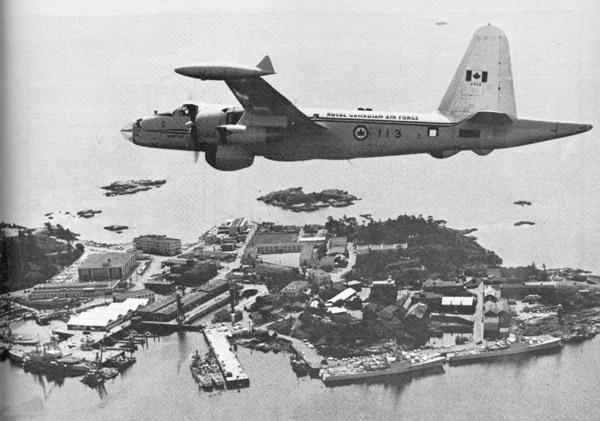 |
| This Neptune from 407 Squadron overflies the base at Esquimalt, BC. (Photo by Cpl. James Cockrane, RCAF from Sentinel Magazine, October 1966). |
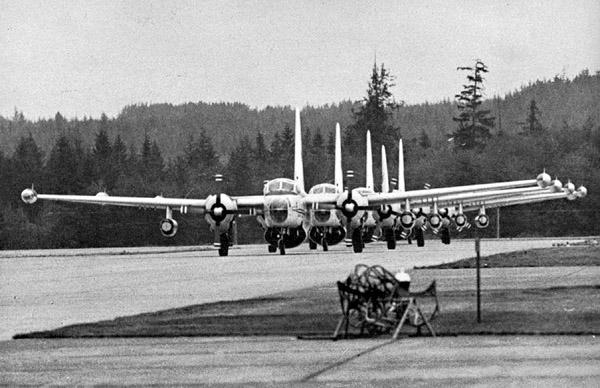 |
| These five Neptunes with 407 Squadron at Comox, B.C. are likely staged just for the photo op. There would never be that many aircraft departing on five missions all at once. (Photo by Cpl. James Cockrane, RCAF from Sentinel Magazine, October 1966). |
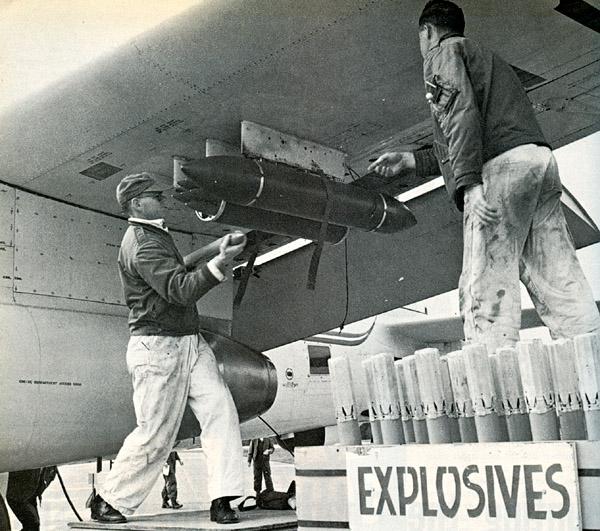 |
| Here, armourers of 407 Squadron are loading Folding Fin Aircraft Rockets (FFAR) that could be loaded singly or in pods as shown. While loading rockets, Comox had an accidental firing that shot up the fire hall. Greenwood also had an accidental firing that launched rockets across the valley to points unknown. (Photo by Cpl. James Cockrane, RCAF from Sentinel Magazine, October 1966). |
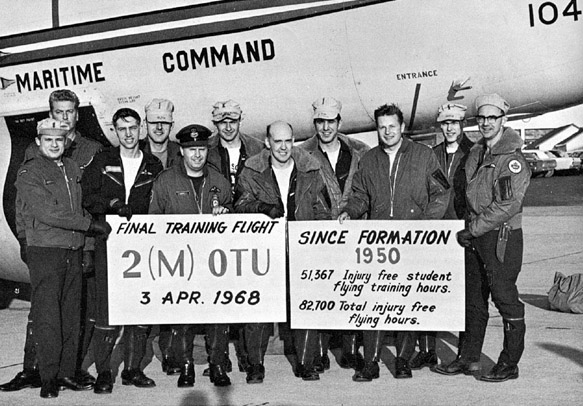 |
| Crew of last flight by No.2 (M)OTU.
L-R front: Lt. O.L. Thompson, Lt. R.E. Hauser, Capt. R.J. Connel, Capt R.A. Dodd, Capt G.P. Reid, Capt. L.E. Graham. L-R rear: Sgt. L.A. Taylor, Lt. G.R. Zanussi, Lt. R.A. Wloka, Lt. A.M. Johnston, Lt. D.C. Rathburn (From Sentinel Magazine July-August 1968) |
 |
| Operation DISTANT PLAIN is the nickname given for the US participation in a series of six non-nuclear experiments conducted in Suffield Alberta. Here a Neptune from 407 Squadron overflies a test blast. An extensive series of experiments was undertaken to study the physical properties of blast waves produced by spherical and hemispherical charges of TNT, ranging in mass from 25 kg (60 lb) to 500 tonnes. An alternative explosive was sought because of the relatively high cost of using TNT. In Canada, Distant Plain was known as project FE567. It is believed that this was the last use of a Neptune aircraft. Most were in storage at Saskatoon by then. (DND photo from the collection of Bert Campbell.) |
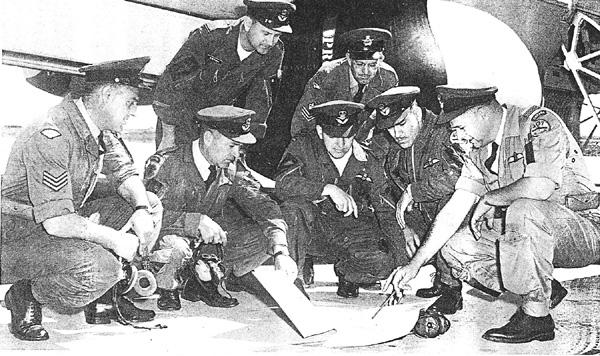 |
| At RCAF station Comox, 407 Squadron Neptune captain F/L D. Wakley (
right) briefs the crew for a Suffield mission. L-R standing: F/O N.Koziak,
FS C. Ackland.
L-R Kneeling: Sgt. W. Produka, F/L D. Donaldson, F/L P. Taggart, F/O J. Ganderton and F/L D. Walkley. (DND photo from the collection of Bert Campbell.) |
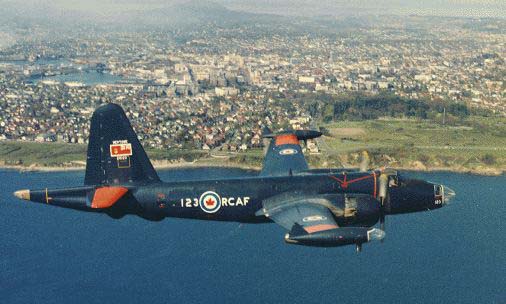 |
| This Neptune is flying alongside the Victoria, BC waterfront looking towards Beacon Hill Park to the right centre. (DND photo from the collection of Patrick Martin) |
 |
| This Neptune had its APS-20 radome blown off. What is noteworthy, however, is the use of block letters for 'Maritime Air Command' rather than the usual rounded style. |
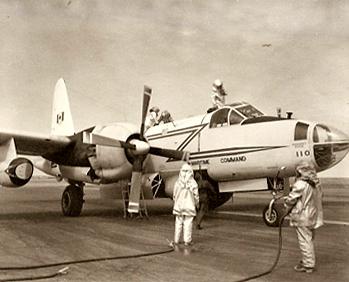 |
| Neptune 110 showing the more common style of lettering and with 'Air' overpainted with the onset of Integration. Aircraft '24110' was being used in a 'Broken Arrow' nuclear incident exercise during this photo session. |
| DND photos from the collection of David Fletcher. |
Credits and References:1) Sentinel Magazine October 1966 "Hunting the Phantoms of the Sea"
2) Sentinel Magazine July-Aug 1968 "King Neptune".
3) Sentinel Magazine 1980/5 "Neptune Nostalgia" by Lt. Cynthia Allan
4) Greenwood Aviation Museum http://gmam.ca/
5) Patrick Martin <104655(at)telus.net>
6) http://www.globalsecurity.org/wmd/ops/distant-plain.htm
7) David C. Fletcher <dcf(at)mars.ark.com>
8) Bert Campbell <navigator1(at)eastlink.ca>
Sept 19/09